NSYSU organizes the Third Asian Marine Mammal Stranding Network Symposium
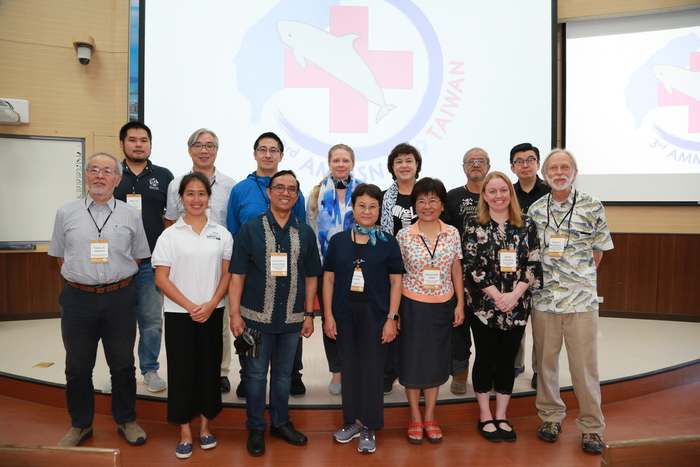
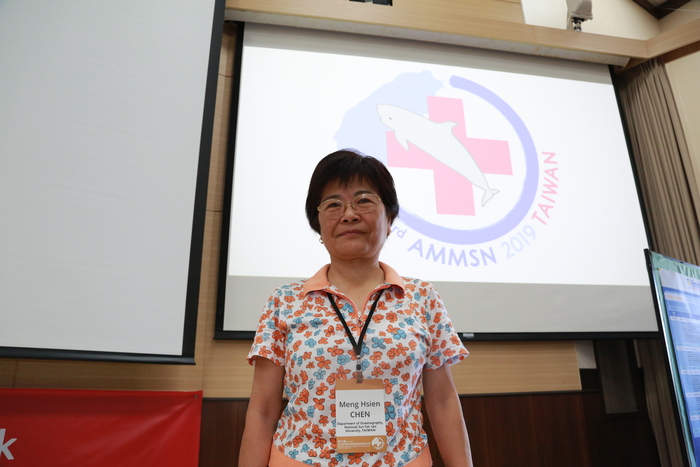
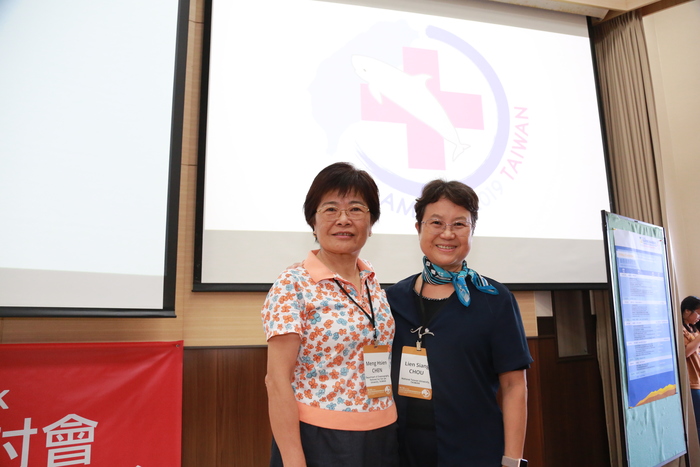
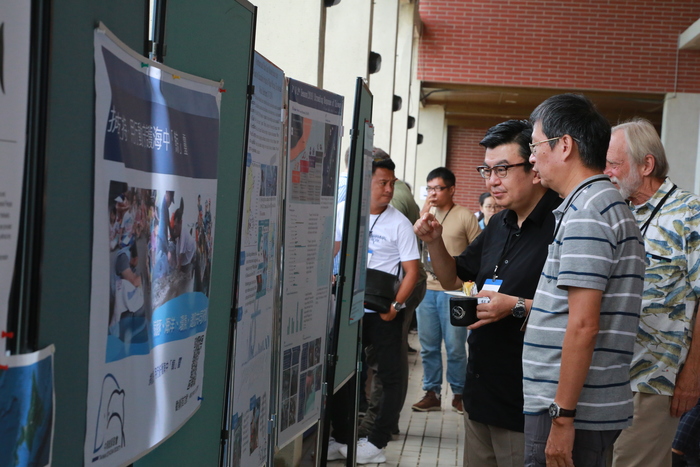
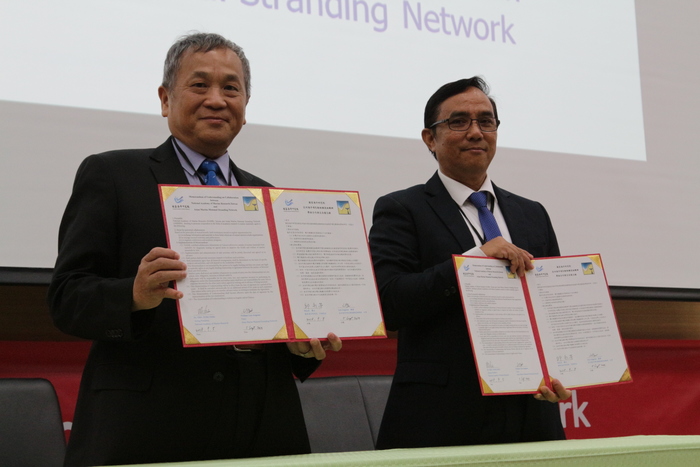
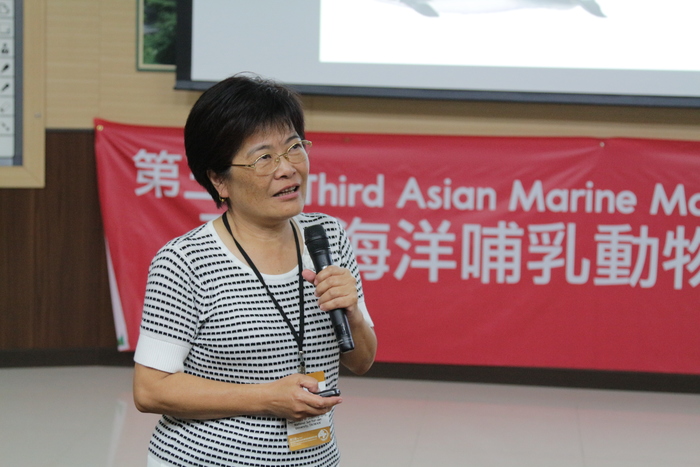
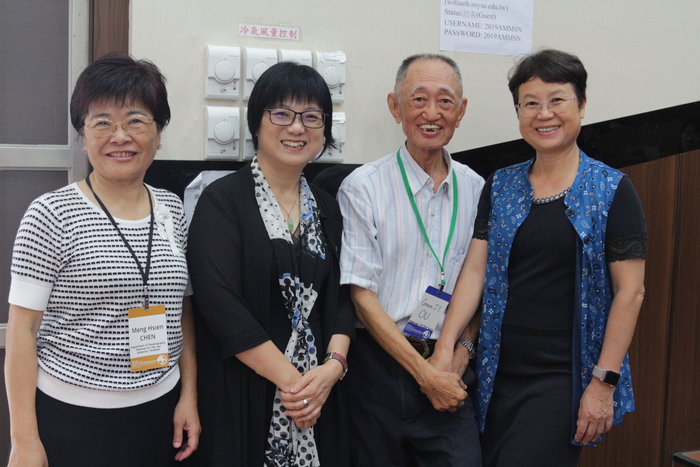
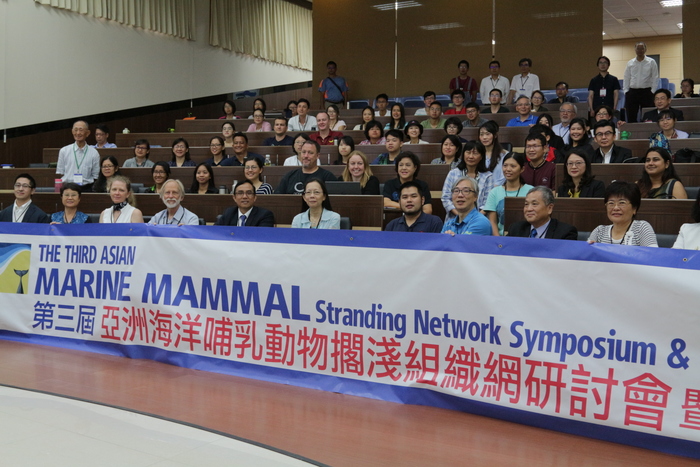
Incidents of cetaceans stranding are reported from all over the world. However, protecting these animals is not easy. On September 5 to 6, with the support of the Ocean Affairs Council and the National Academy of Marine Research, NSYSU organized the 3rd Asian Marine Mammal Stranding Network Symposium at the College of Marine Sciences. During the conference, a MOU was signed between the National Academy of Marine Research and the Asian Marine Mammal Stranding Network. Also, the Chairperson of the Department of Oceanography at NSYSU, Prof. Meng-Hsien Chen, presented her research on the bioaccumulation of heavy metals in the tissues of toothed whales. Professor Chen’s research discovered a serious problem of silver and cadmium marine pollution in the western part of the Pacific Ocean; she said, “This is the result of large amounts of silver nanoparticles and plastics used for the production of clothes, detergents and hygiene products from our daily life”.
Professor Meng-Hsien Chen and her research team analyzed heavy metals in the stranded toothed cetaceans from the Eastern coast of Taiwan , using them as a biomarker to assess heavy metal contamination worldwide. The research found that, in the recent two decades , levels of silver and cadmium higher than those in the past century were discovered in the tissues of the pantropical spotted dolphins and the Risso’s dolphins, which live in the Pacific Ocean. This indicates that countries with access to the Western Pacific Ocean, with their intensive industrial development and growing population density, have contributed to increased silver and cadmium contamination in the area since the beginning of this century. Professor Chen pointed out that cetaceans are the top predators in the marine environment, and that their role in the ecosystem is similar to that of tigers in forests and of humans on the Earth; thus, “the amounts of heavy metals in the tissues of cetaceans may be seen as an early warning about pollution of the marine environment”.
“The presence of heavy metals in ocean waters is related exclusively to human activity”, says Professor Chen. In the fast-developing civilized world, large amounts of heavy metals are used; although they are inorganic and harmless, they gradually accumulate in the cetaceans’ organs. “Cetaceans are voicelessly warning humanity about the deterioration of the marine environment”. Thus, there is a need to organize a research group of scientists who can take an epidemiological approach to inquire into the subject on a long-term basis, solve the problem of cetaceans’ stranding and get to know the quality of the marine and terrestrial environments by understanding the message the cetaceans are trying to convey.
This edition of the Symposium was hosted by the director of the National Academy of Marine Research of the Ocean Affairs Council, Yung-Fang Chiu. Thanks to the planning, preparation and multiple networks of the incumbent chairman of the Taiwan Cetacean Society, Wei-Cheng Yang, and to Lien-Siang Chou – the Society’s founder and professor at National Taiwan University, many honorable guests attended the event: head of the Ocean Conservation Administration of the Ocean Affairs Council, Hsiang-Wen Huang; President of Philippine Marine Mammal Stranding Network, Lemnuel V. Aragones, PhD; Robert L. Brownell Jr, a Senior Scientist for International Protected Marine Resources, National Marine Fisheries Service, US National Oceanic and Atmospheric Administration; director of the Aquatic Animal Disease Research Centre, Nantarika Chansue, PhD; Tadasu Yamada, PhD – Curator Emeritus, of the National Museum of Nature and Science, Japan; Dr Karen Stockin, PhD, Director of the Coastal-Research Group and Secretariat Strandings Coordinator for the International Whaling Commission, UK; and other foreign and Taiwanese academics from 15 countries who are eager to contribute to the conservation of cetaceans.
Professor Meng-Hsien Chen and her research team analyzed heavy metals in the stranded toothed cetaceans from the Eastern coast of Taiwan , using them as a biomarker to assess heavy metal contamination worldwide. The research found that, in the recent two decades , levels of silver and cadmium higher than those in the past century were discovered in the tissues of the pantropical spotted dolphins and the Risso’s dolphins, which live in the Pacific Ocean. This indicates that countries with access to the Western Pacific Ocean, with their intensive industrial development and growing population density, have contributed to increased silver and cadmium contamination in the area since the beginning of this century. Professor Chen pointed out that cetaceans are the top predators in the marine environment, and that their role in the ecosystem is similar to that of tigers in forests and of humans on the Earth; thus, “the amounts of heavy metals in the tissues of cetaceans may be seen as an early warning about pollution of the marine environment”.
“The presence of heavy metals in ocean waters is related exclusively to human activity”, says Professor Chen. In the fast-developing civilized world, large amounts of heavy metals are used; although they are inorganic and harmless, they gradually accumulate in the cetaceans’ organs. “Cetaceans are voicelessly warning humanity about the deterioration of the marine environment”. Thus, there is a need to organize a research group of scientists who can take an epidemiological approach to inquire into the subject on a long-term basis, solve the problem of cetaceans’ stranding and get to know the quality of the marine and terrestrial environments by understanding the message the cetaceans are trying to convey.
This edition of the Symposium was hosted by the director of the National Academy of Marine Research of the Ocean Affairs Council, Yung-Fang Chiu. Thanks to the planning, preparation and multiple networks of the incumbent chairman of the Taiwan Cetacean Society, Wei-Cheng Yang, and to Lien-Siang Chou – the Society’s founder and professor at National Taiwan University, many honorable guests attended the event: head of the Ocean Conservation Administration of the Ocean Affairs Council, Hsiang-Wen Huang; President of Philippine Marine Mammal Stranding Network, Lemnuel V. Aragones, PhD; Robert L. Brownell Jr, a Senior Scientist for International Protected Marine Resources, National Marine Fisheries Service, US National Oceanic and Atmospheric Administration; director of the Aquatic Animal Disease Research Centre, Nantarika Chansue, PhD; Tadasu Yamada, PhD – Curator Emeritus, of the National Museum of Nature and Science, Japan; Dr Karen Stockin, PhD, Director of the Coastal-Research Group and Secretariat Strandings Coordinator for the International Whaling Commission, UK; and other foreign and Taiwanese academics from 15 countries who are eager to contribute to the conservation of cetaceans.
Click Num:
Share
